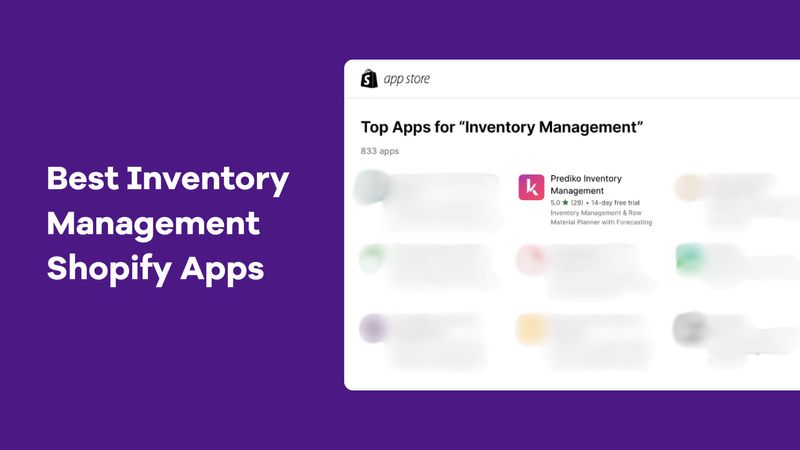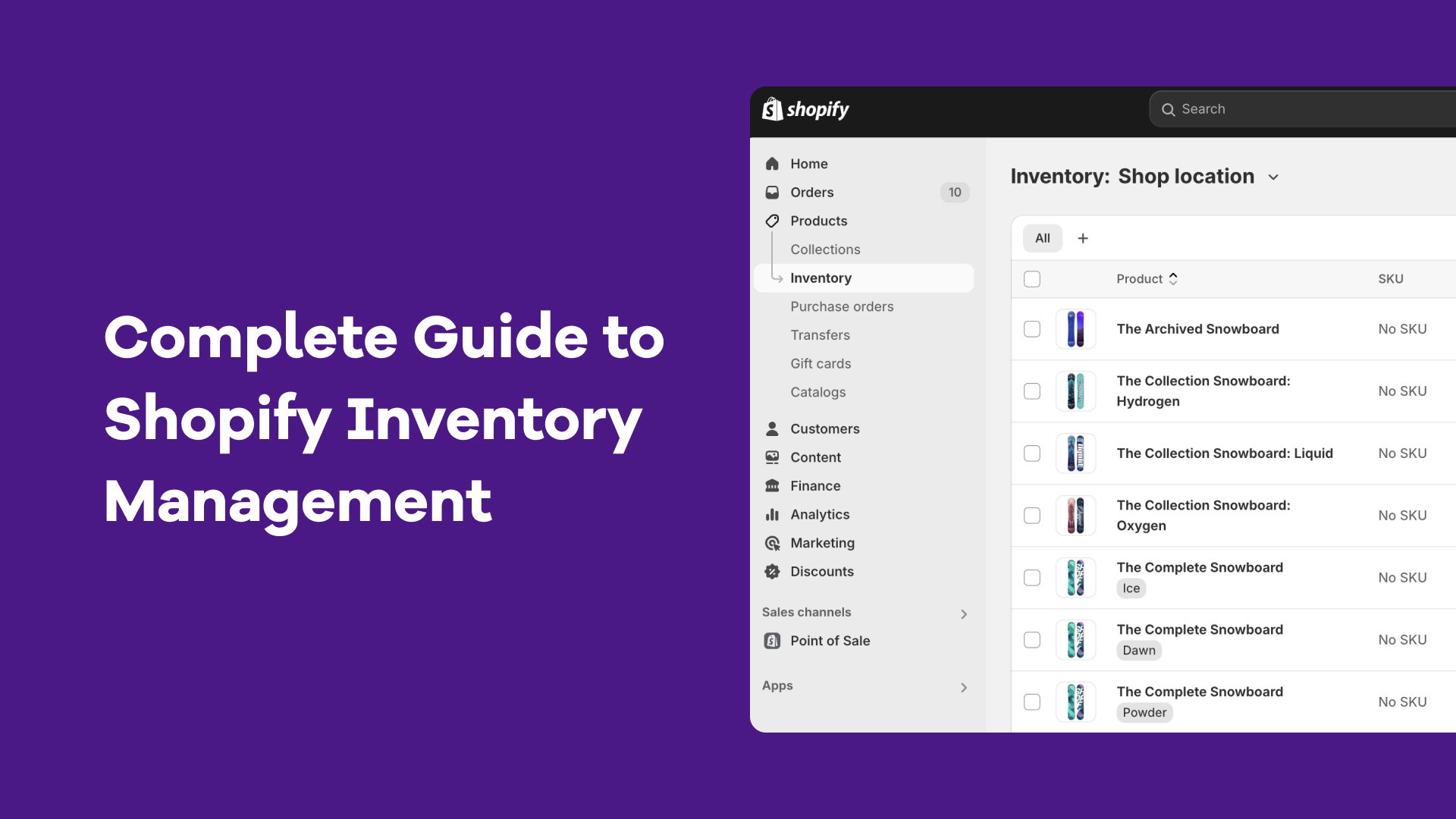“I’m done with this brand. They always show it’s in stock, but when I go to check out, it’s out of stock.”
Ever come across a review like this and felt frustrated? You’re doing your best. Your warehouse looks full.
But customers still run into out-of-stock messages at the worst possible time.
The problem isn’t always stock levels. It’s inventory flow.
When products don’t move efficiently from storage to the right sales channels, it creates invisible roadblocks. These gaps cost you sales, hurt your cash flow, and damage customer trust.
We explain how inventory flows, where it commonly breaks down, how to fix it, and the tools that can help you optimize it.
What is Inventory Flow and Why is it Important?
Inventory flow is the movement of stock from the moment it enters your business until it reaches the customer. It includes every stage: receiving goods, storing them, fulfilling orders, and delivering them.
In eCommerce, efficient inventory flow is important to move products smoothly without delays or bottlenecks.
Stock that moves too slowly ties up capital and risks obsolescence, while stock that moves too quickly without proper planning can cause stockouts and missed sales.
Essentially, inventory flow connects purchasing, warehousing, order management, and shipping into one continuous process.
Balance between supply and demand minimizes overstock and shortages, while helping businesses meet customer expectations for fast, reliable delivery.
Key Concepts of Inventory Flow
Understanding the main stages of inventory flow helps you manage stock more effectively and avoid costly disruptions.
Here’s a closer look at key concepts.
1. Inbound inventory management
Inbound inventory management covers everything that happens before products enter your warehouse or fulfillment center.
This includes coordinating with suppliers, scheduling deliveries, unloading shipments, and verifying goods for accuracy and quality.
Efficient inbound processes mean that orders arrive on time, in the right quantities, and without damage, so they can quickly move into storage or fulfillment.
Techniques for optimizing inbound logistics include
- Scheduling deliveries to avoid bottlenecks during peak warehouse hours
- Using advanced shipment notifications so receiving teams are ready for incoming goods
- Standardizing quality checks to quickly identify and resolve supplier errors
- Working with carriers that provide reliable lead times and real-time tracking
When inbound inventory is managed well, stock is ready for sale faster, supplier issues are caught early, and the rest of the inventory flow stays on schedule.
2. Inventory storage and organization
This refers to how inventory moves inside your warehouse or fulfillment center.
It’s about designing physical space, systems, and processes so that goods can be received, stored, picked, packed, and shipped with minimal errors, delays, or wasted effort.
Best practices for warehouse organization include
- Grouping high-demand items near packing stations to reduce picking time
- Using clear labeling and barcode systems for faster identification
- Keeping similar items together to minimize search time during picking
- Designing storage layouts with clear pathways to improve movement and safety
Inventory categorization, say, by SKU, product type, or turnover rate, directly affects the flow of goods.
When categories are clear and consistent, products move through receiving, storage, and fulfillment without confusion, leading to faster order processing and fewer mistakes.
3. Inventory tracking and control
Inventory tracking and control cover the systems used to monitor stock levels, locations, and movements. Accurate tracking keeps orders on schedule and prevents stock discrepancies.
Real-time inventory tracking is important because it shows exactly what is in stock, what is incoming, and what needs replenishment.
This reduces the risk of selling items you do not have or holding excess that ties up space.
Technologies for effective control include
- Barcode scanners and RFID tags for quick, accurate identification
- Warehouse management systems that update stock data instantly
- Integrated platforms like Prediko that sync and track inventory across sales channels
- Automated alerts for low stock and reorder points
When inventory tracking is precise and updated in real time, products reach the customer without delays or shortages.
4. Outbound inventory management
Outbound inventory management covers everything from picking and packing orders to shipping them to customers. This stage directly affects delivery times and customer satisfaction.
Efficient order fulfillment means orders are processed quickly, accurately, and in the correct sequence. Reducing errors and delays at this stage keeps returns low and avoids extra shipping costs.
Strategies for improving outbound processes include
- Using batch picking methods for orders with similar items
- Standardizing packing procedures to reduce mistakes
- Integrating shipping software that selects the best carrier and prints accurate labels
- Scheduling regular quality checks before parcels leave the warehouse
When outbound processes are organized and consistent, orders reach customers on time and in the expected condition.
Inventory Flow Challenges in eCommerce
Managing inventory flow in e-commerce is tricky, especially when stock moves across multiple sales channels, warehouses, and shipping partners.
Here’s a look at the most common challenges and how to tackle them.
1. Stock imbalances across locations
When one location has excess stock while another runs out, you lose sales in one market and increase storage costs in another.
Solution
Use inventory management apps that track stock in real time across all locations.
Set automated transfer rules to move products where they are needed most before stockouts or overstocking occurs.
2. Delays in order fulfillment
Slow picking, packing, or shipping causes missed delivery dates and unhappy customers. These delays often happen when warehouse layouts are inefficient or when systems are not integrated.
Solution
Organize warehouse storage so high-demand items are near packing stations, and integrate your order management system or Shopify store with shipping software or 3PLs to reduce manual processing time.
3. Inaccurate inventory data
When stock records do not match what is physically available, you risk selling items you do not have or missing sales opportunities.
Solution
Implement regular cycle counts and use barcode or RFID scanning to update inventory records immediately after each movement.
Choose an inventory software that syncs with all your sales channels in real time, so that the data is accurate and discrepancies are reduced.
Key Metrics to Track Inventory Flow Efficiency
To keep your inventory flowing smoothly, here are key metrics you should monitor.
1. Inventory velocity
Inventory velocity measures how quickly products are sold relative to the average amount of stock you carry.
Formula
Total Sales (in units) ÷ Average Inventory (in units)
A high velocity means products move quickly, reducing the time they sit in storage and lowering holding costs. If velocity is too low, it may indicate overstocking, poor demand forecasting, or slow-moving items that tie up capital.
2. Fill rate
Fill rate indicates the percentage of customer orders that are fulfilled completely on the first attempt, without requiring backorders or substitutions.
Formula
(Total Orders Shipped ÷ Total Orders Placed) × 100
A high fill rate reflects well-aligned inventory levels with demand and efficient fulfillment processes. A low fill rate signals that stockouts or inaccurate inventory records are preventing you from meeting customer expectations.
3. Stockout rate
Stockout rate tracks the percentage of SKUs that are unavailable when customers place an order.
Formula
(Number of SKUs Out of Stock ÷ Total SKUs) × 100
A low stockout rate is essential for maintaining sales and customer trust. Frequent stockouts often point to forecasting errors, supplier delays, or slow replenishment processes.
4. Order cycle time
Order cycle time measures the time between when a customer places an order and when that order is shipped.
Formula
Delivery Date - Order Date
Shorter cycle times suggest that your picking, packing, and shipping processes are well-organized. Longer times may indicate inefficiencies in order processing, poor warehouse layout, or bottlenecks in outbound logistics.
5. Inventory turnover
Inventory turnover measures how many times inventory is sold and replaced during a specific period.
Formula
Cost of Goods Sold ÷ Average Inventory
A high turnover rate shows that products are moving steadily, keeping inventory fresh and reducing the risk of obsolescence. A low inventory turnover rate may mean products are overstocked or not selling as expected.
Benefits of Effective Inventory Flow Management
Effective inventory flow management does more than just keep your stock moving. It also helps with
1. Improved customer satisfaction and retention
Customer satisfaction often comes down to whether the right item arrives on time.
When your inventory flow is consistent, it helps you avoid last-minute cancellations, split shipments, or incorrect substitutions. These are the kinds of issues that erode trust and hurt retention.
Inventory flow ensures stock is available where it’s needed, updates are reflected across channels in real time, and fulfillment runs without delay. That reliability makes the overall experience smoother for your customers.
2. Operational efficiency through automation
Manual inventory management often leads to wasted labor, slower order processing, and higher storage costs. These inefficiencies appear as delayed shipments, frequent overtime, or excess stock occupying valuable warehouse space.
By using real-time data, automation, and AI for picking and packing, supplier coordination, and tracking, inventory flows smoothly from receiving to shipping. The result is faster fulfillment, lower handling costs, and fewer last-minute disruptions.
According to Gartner, 61% of top-performing supply chain organizations are piloting or using AI and machine learning for inventory and network optimization.
3. Better decision-making through accurate data
Accurate inventory data gives you a clear picture of what’s available, what’s moving, and where you might run into gaps. Without it, decisions around purchasing, fulfillment, and pricing are just guesswork.
When data is up to date, your team can make changes quickly, whether that’s adjusting reorder levels, transferring stock, or replenishing for sudden demand shifts.
It also allows for better planning across product launches, promotions, or seasonal peaks.
Steps to Implement an Effective Inventory Flow
A smooth inventory flow doesn’t happen by chance. It requires clear structure, real-time visibility, and consistent processes across every stage, from receiving products to shipping them out.
Here’s how to build it, step by step.
1. Map out the full inventory lifecycle
Start by documenting every stage inventory passes through, from purchase orders and inbound shipments to storage, picking, and final delivery. This helps spot gaps, slow points, and unnecessary actions that disrupt the flow.
You should also include reverse logistics if you handle returns. It’s often overlooked, but it affects how quickly inventory is reprocessed or written off.
2. Set up real-time inventory tracking
Inventory flow relies on accurate, real-time visibility. Ensure your team can track stock levels, locations, and movements seamlessly.
Tools like Prediko automatically update inventory as orders are received, picked, packed, or returned.
For Shopify users, this means integrating your storefront with warehouse systems so stock updates happen automatically, not manually.
3. Define rules for allocation and fulfillment
Determine how inventory should be allocated across channels, regions, or warehouses.
Define rules for when to split orders, fulfill from alternate locations, or hold inventory for high-priority SKUs.
This step ensures stock is balanced, preventing shortages in one location and idle inventory in another.
4. Monitor performance and adjust regularly
Once the system is live, track key metrics like fill rate, order cycle time, and stockout rate. These will show where your flow is improving, and where things are still getting stuck.
Adjust safety stock, warehouse layout, or reorder thresholds as needed. Inventory flow is not a one-time setup; it has to adapt to sales patterns, seasonality, and demand spikes.
Healf reduced stockouts and improved inventory flow with Prediko
Healf, a UK-based retailer, was facing frequent stockouts, poor visibility, and inaccurate demand forecasting. Managing inventory across spreadsheets led to delays, errors, and lost sales.
Prediko provided an end-to-end inventory solution that solved these flow issues. Its real-time dashboard gave Healf clear visibility into current stock, inbound supply, and demand patterns.
Within just two months, stockouts dropped from 4% to 1%, the team saved 10 hours of manual work per week, and Healf saw a 75× ROI.
By improving visibility and automating decisions across the supply chain, Prediko helped Healf create a smoother, faster, and more predictable inventory flow. Read more here.
Apps & Tools to Optimize Inventory Flow
Inventory flow for Shopify stores only works when the systems behind it stay connected, accurate, and fast. The right tools make that happen by syncing movement across purchasing, warehousing, and fulfillment.
Shopify Flow helps automate some of the basics. You can set triggers to reorder stock, tag products, or route orders to specific warehouses based on availability. It’s useful for handling straightforward, repeatable tasks across your store.
But when your operations span multiple SKUs, locations, suppliers, or regions, that’s not enough. You need tools that do more than trigger an alert; you need tools that actually manage inventory flow at every step.
That’s where tools like Prediko become essential.
Prediko gives Shopify brands full control over their inventory flow. It connects demand, supply, purchasing, and fulfillment in one system. Each part works together to keep stock moving accurately and on time.
Here’s how
- Real-time Inventory Tracking: Monitor stock levels across warehouses, sales channels, and locations automatically, ensuring accurate data at all times
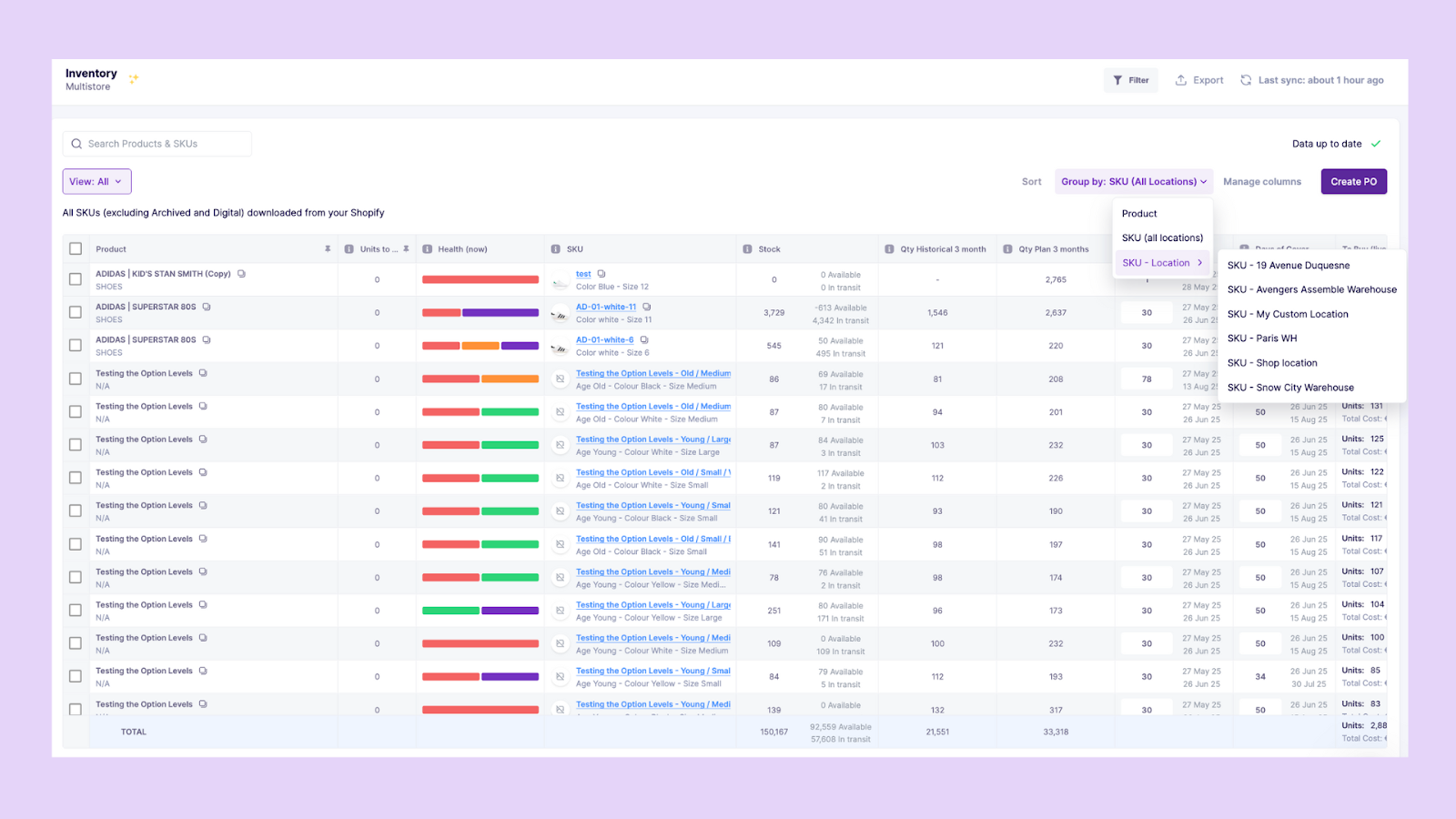
- AI Demand Planning: Predict future sales using historical data, seasonality, and trends to prevent stockouts or overstocks
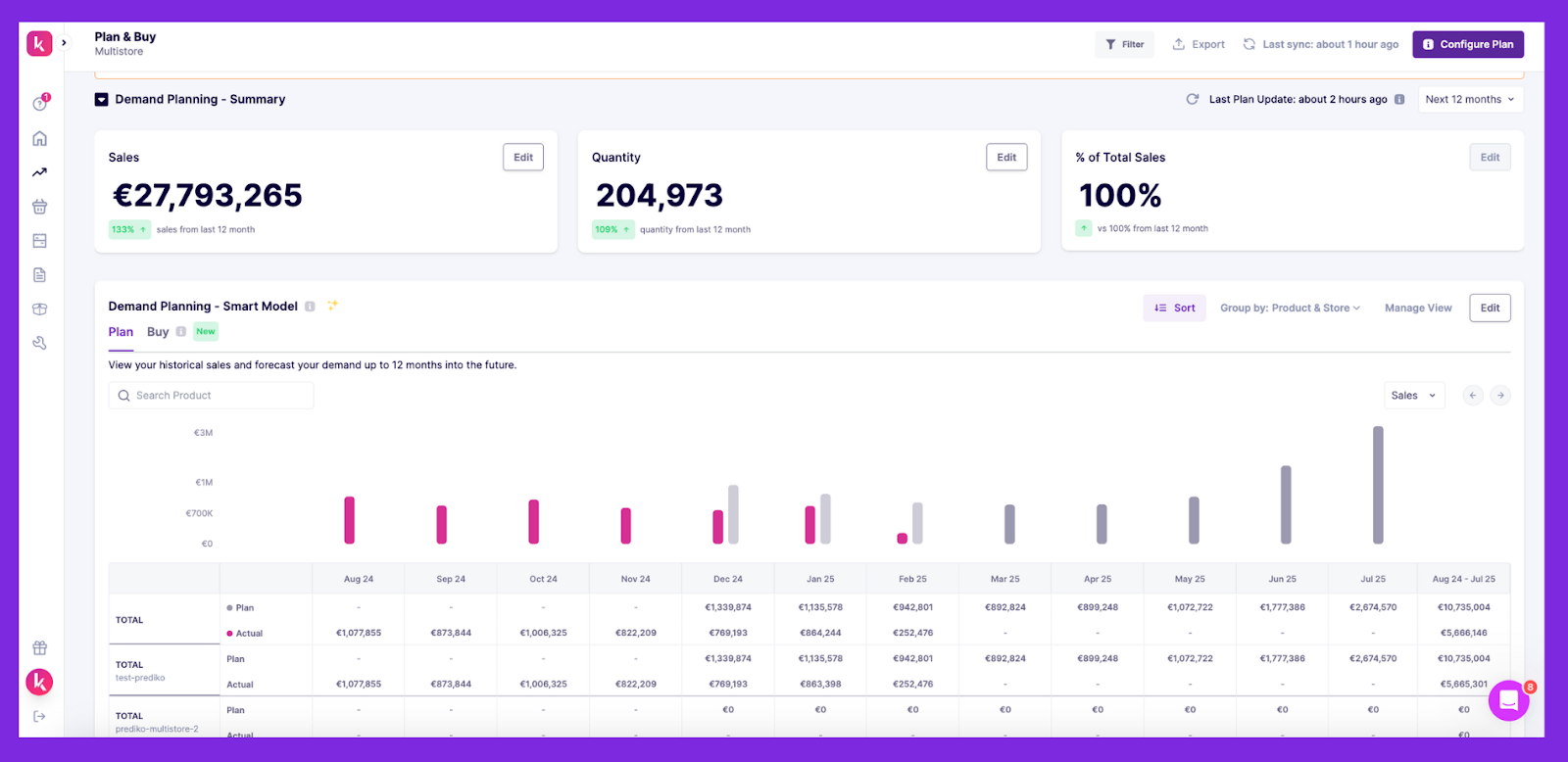
- AI Supply Planning: Buying plan to tell you what to order, when to order, and in what quantities, keeping inventory balanced

- Purchase Order Management: Easily manage purchasing as well. Create, update, and track POs automatically, including supplier lead times, delivery schedules, and status updates.
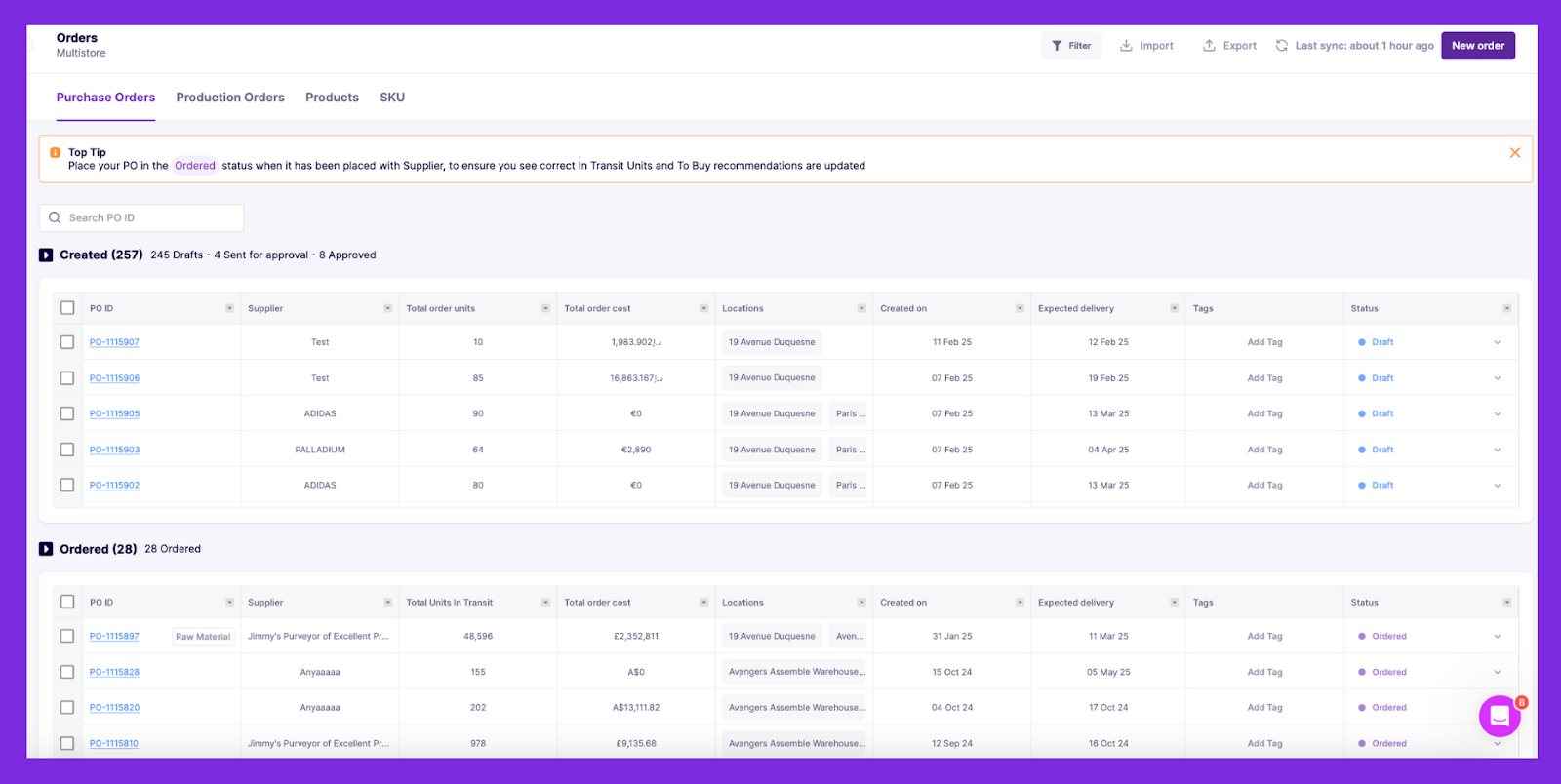
- Raw Materials Management: Forecast material needs based on finished goods demand, preventing shortages in your manufacturing process
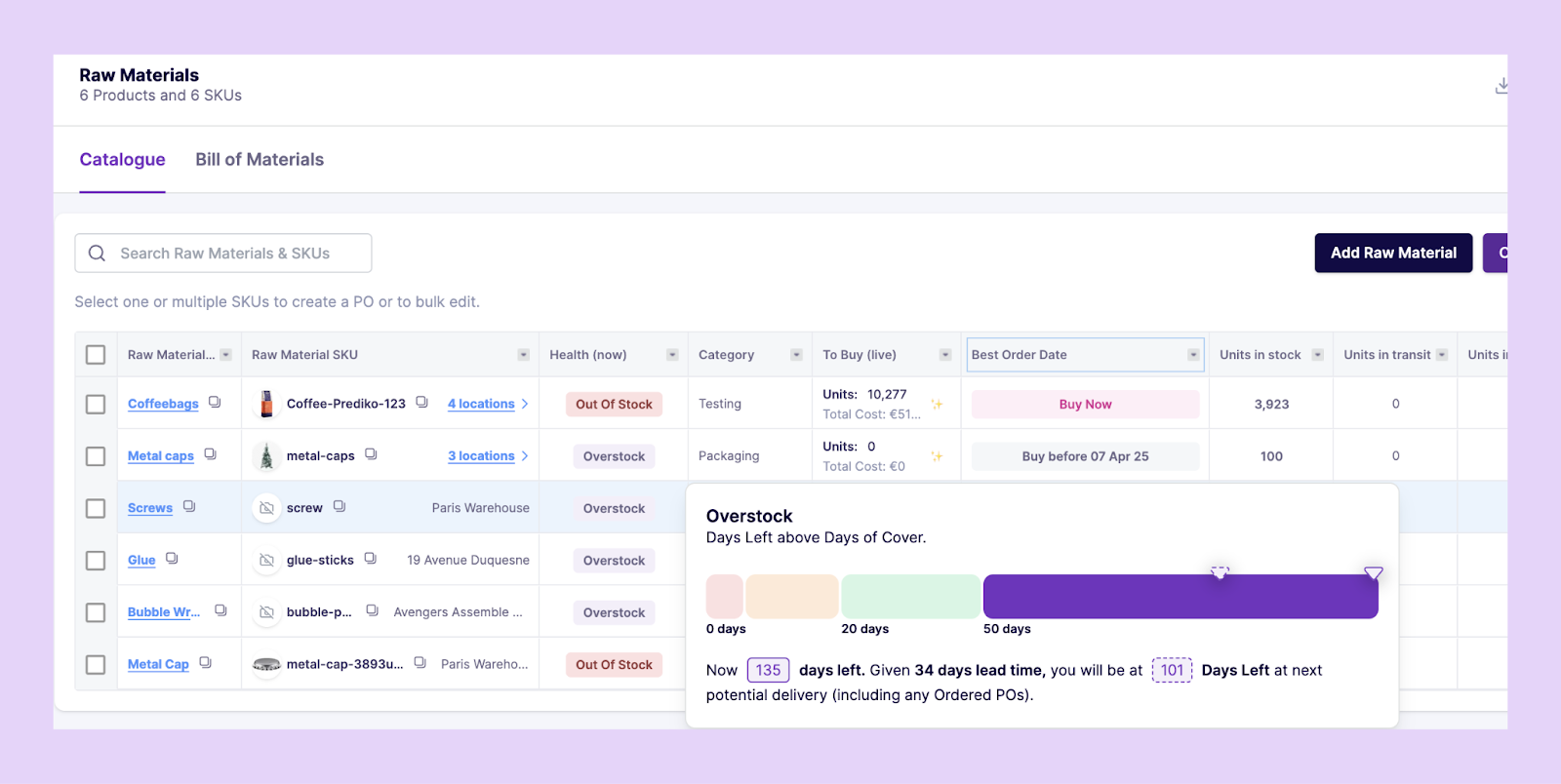
- Analytics and Reports: Access 10+ ready-to-use report templates to track stockouts, sales trends, and overstocks. Get low-stock alerts that allow your team to make fast, data-driven decisions

- 70+ integrations: Prediko also integrates seamlessly with your Shopify store, POS, 3PLs, and warehouse systems, connecting every touchpoint across your inventory flow.
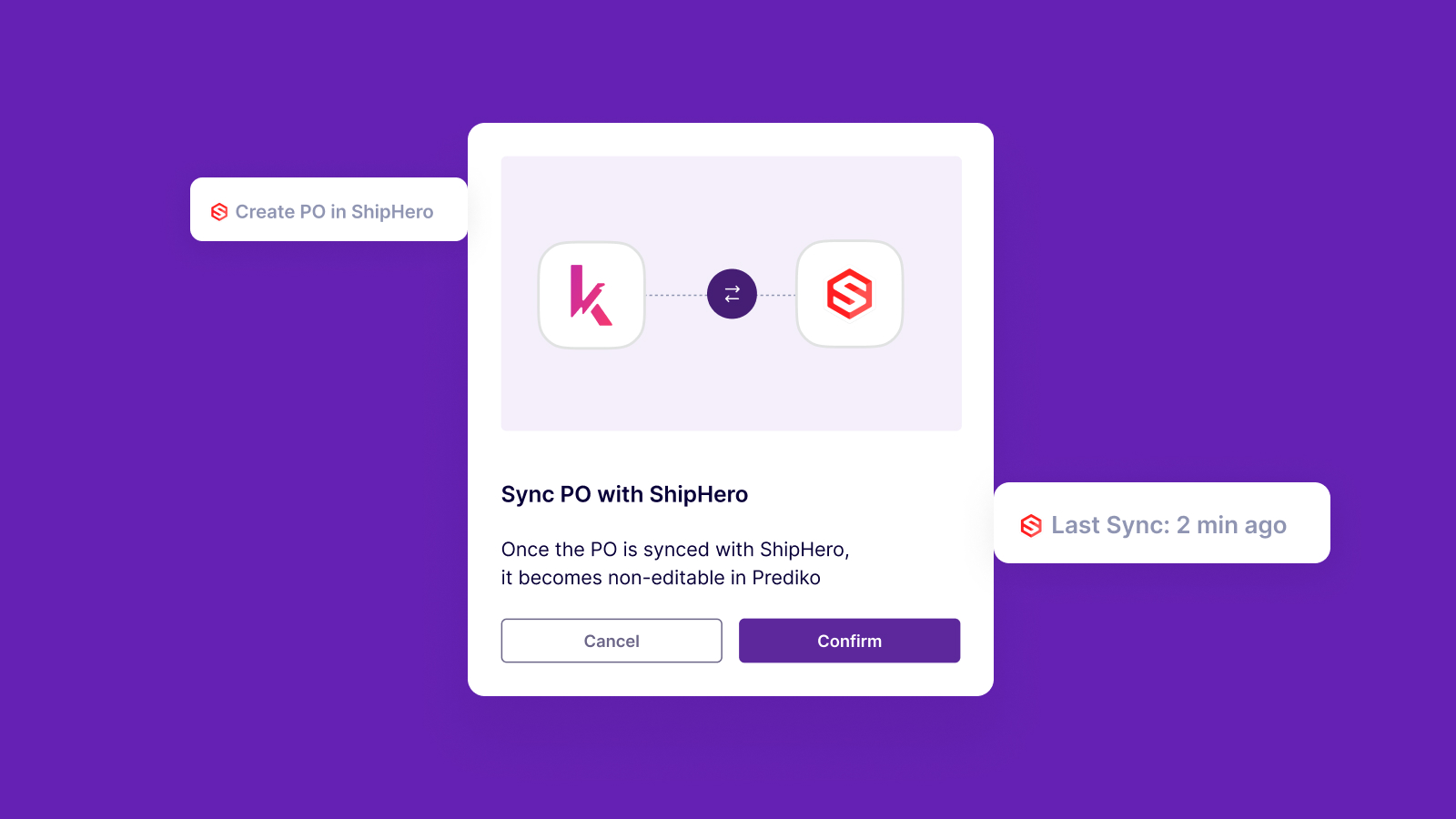
In short, Prediko doesn’t just track inventory. It keeps stock flowing seamlessly from forecast to fulfillment.
Curious about other options? Explore our guide on the 10 best Shopify inventory management apps.
Better Inventory Flow, Better Bottom Line
Effective Inventory Flow keeps stock moving smoothly from supplier to shelf to customer. It reduces delays, prevents overstock and stockouts, and helps your team make faster, more accurate decisions.
We break down the key concepts, challenges, tools, and metrics that shape inventory flow for ecommerce businesses.
Prediko empowers Shopify brands by giving them full visibility and control across every stage, from demand planning to order fulfillment. This way, you spend less time fixing your inventory flow and more time growing your store.
Start your 14-day free trial and see Prediko difference on your inventory flow.



.png)



